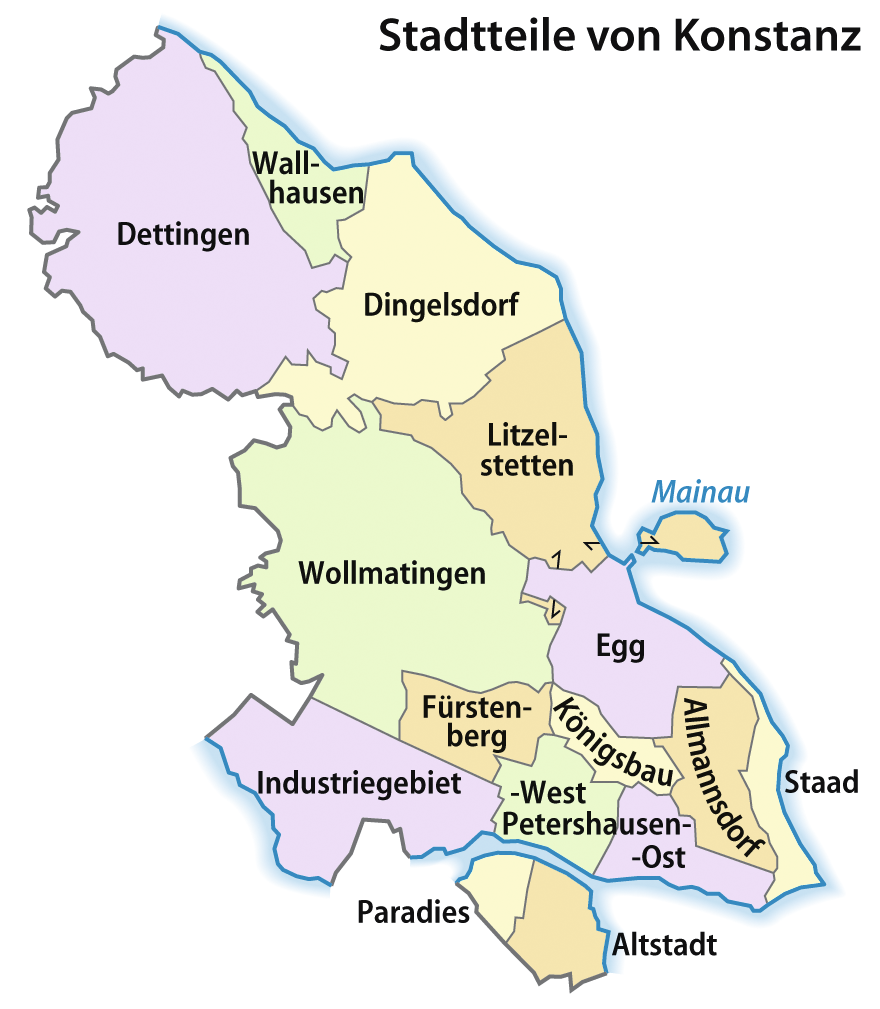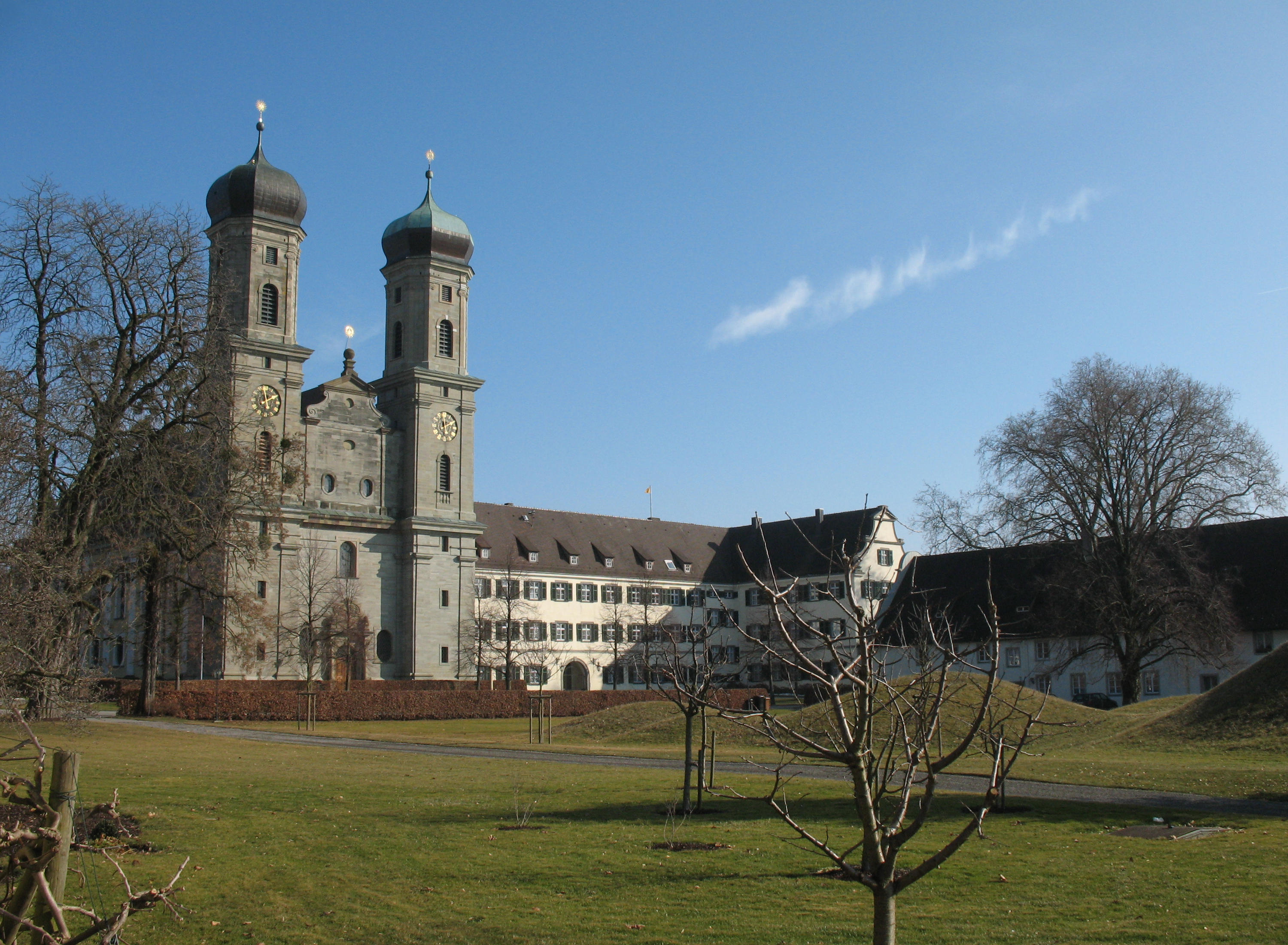|
Konstanz
Konstanz (, , locally: ; also written as Constance in English) is a university city with approximately 83,000 inhabitants located at the western end of Lake Constance in the south of Germany. The city houses the University of Konstanz and was the residence of the Roman Catholic Diocese of Konstanz for more than 1,200 years. Location The city is located in the state of Baden-Württemberg and situated at the banks of Lake Constance (''Bodensee'' in German). The river Rhine, which starts in the Swiss Alps, passes through Lake Constance and leaves it, considerably larger, by flowing under a bridge connecting the two parts of the city. North of the river lies the larger part of the city with residential areas, industrial estates, and the University of Konstanz; while south of the river is the old town, which houses the administrative centre and shopping facilities in addition to the ''Hochschule'' or the ''University of Applied Sciences''. Car ferries provide access across Lake Cons ... [...More Info...] [...Related Items...] OR: [Wikipedia] [Google] [Baidu] |
University Of Konstanz
The University of Konstanz (german: Universität Konstanz) is a university in the city of Konstanz in Baden-Württemberg, Germany. Its main campus was opened on the Gießberg in 1972 after being founded in 1966. The university is Germany's southernmost university and is situated on the shore of Lake Constance just four kilometres from the Swiss border. It has been successful in all three funding lines of the Excellence Initiative, and is therefore one of Germany's elite "Universities of Excellence", a group of prestigious universities often considered the German Ivy League. The university is ranked in top 100 worldwide in the field of social policy and administration in the 2020 QS World University Rankings, and ranked 51 in Political Science according to the 2020 ShanghaiRanking. The U.S. Department of Energy also refers to the University of Konstanz as a "small Harvard". Moreover, the University of Konstanz cooperates with a large number of renowned institutions, such a ... [...More Info...] [...Related Items...] OR: [Wikipedia] [Google] [Baidu] |
Konstanz Stadtteile Mehrfarbig
Konstanz (, , locally: ; also written as Constance in English) is a university city with approximately 83,000 inhabitants located at the western end of Lake Constance in the south of Germany. The city houses the University of Konstanz and was the residence of the Roman Catholic Diocese of Konstanz for more than 1,200 years. Location The city is located in the state of Baden-Württemberg and situated at the banks of Lake Constance (''Bodensee'' in German). The river Rhine, which starts in the Swiss Alps, passes through Lake Constance and leaves it, considerably larger, by flowing under a bridge connecting the two parts of the city. North of the river lies the larger part of the city with residential areas, industrial estates, and the University of Konstanz; while south of the river is the old town, which houses the administrative centre and shopping facilities in addition to the ''Hochschule'' or the ''University of Applied Sciences''. Car ferries provide access across Lake Cons ... [...More Info...] [...Related Items...] OR: [Wikipedia] [Google] [Baidu] |
Konstanz Imperia 01
Konstanz (, , locally: ; also written as Constance in English) is a university city with approximately 83,000 inhabitants located at the western end of Lake Constance in the south of Germany. The city houses the University of Konstanz and was the residence of the Roman Catholic Diocese of Konstanz for more than 1,200 years. Location The city is located in the state of Baden-Württemberg and situated at the banks of Lake Constance (''Bodensee'' in German). The river Rhine, which starts in the Swiss Alps, passes through Lake Constance and leaves it, considerably larger, by flowing under a bridge connecting the two parts of the city. North of the river lies the larger part of the city with residential areas, industrial estates, and the University of Konstanz; while south of the river is the old town, which houses the administrative centre and shopping facilities in addition to the ''Hochschule'' or the ''University of Applied Sciences''. Car ferries provide access across Lake C ... [...More Info...] [...Related Items...] OR: [Wikipedia] [Google] [Baidu] |
Lake Constance
Lake Constance (german: Bodensee, ) refers to three bodies of water on the Rhine at the northern foot of the Alps: Upper Lake Constance (''Obersee''), Lower Lake Constance (''Untersee''), and a connecting stretch of the Rhine, called the Lake Rhine (''Seerhein''). These waterbodies lie within the Lake Constance Basin () in the Alpine Foreland through which the Rhine flows. The lake is situated where Germany, Switzerland, and Austria meet. Its shorelines lie in the German states of Baden-Württemberg and Bavaria, the Swiss cantons of St. Gallen, Thurgau, and Schaffhausen, and the Austrian state of Vorarlberg. The actual location of the border is disputed. The Alpine Rhine forms in its original course the Austro-Swiss border and flows into the lake from the south. The High Rhine flows westbound out of the lake and forms (with the exception of the Canton of Schaffhausen) the German-Swiss border as far as to the city of Basel. The most populous towns on the Upper Lake ... [...More Info...] [...Related Items...] OR: [Wikipedia] [Google] [Baidu] |
Diocese Of Konstanz
The Prince-Bishopric of Constance, (german: Hochstift Konstanz, Fürstbistum Konstanz, Bistum Konstanz) was a small ecclesiastical principality of the Holy Roman Empire from the mid-12th century until its secularisation in 1802–1803. In his dual capacity as prince and as bishop, the prince-bishop also governed the Diocese of Konstanz, which existed from about 585 until its dissolution in 1821, and whose territory extended over an area much larger than the principality."Diocese of Konstanz " '' Catholic-Hierarchy.org''. David M. Cheney. Retrieved February 29, 2016 [...More Info...] [...Related Items...] OR: [Wikipedia] [Google] [Baidu] |
Kreuzlingen
Kreuzlingen is a municipality in the district of Kreuzlingen in the canton of Thurgau in north-eastern Switzerland. It is the seat of the district and is the second-largest city of the canton, after Frauenfeld, with a population of about 22,000. Together with the adjoining city of Konstanz just across the border in Germany, Kreuzlingen is part of the largest conurbation on Lake Constance with a population of almost 120,000. History The name of the municipality stems from the Augustinian monastery ''Crucelin'', later Kreuzlingen Abbey. It was founded in 1125 by the Bishop of Constance Ulrich I. In the Swabian War and the 30 Years' War after the siege of Constance by Swedish troops, the Augustinian monastery was burned down by the people of Constance, who blamed the monks for having supported the enemy. In 1650, the monastery was rebuilt in its present location. With secularization in 1848, the buildings became a teachers' school. The chapel became a Catholic Church. The ... [...More Info...] [...Related Items...] OR: [Wikipedia] [Google] [Baidu] |
Mainau
Mainau also referred to as Mav(e)no(w), Maienowe (in 1242), Maienow (in 1357), Maienau, Mainowe (in 1394) and Mainaw (in 1580) is an island in Lake Constance (on the Southern shore of the Überlinger See near the city of Konstanz, Baden-Württemberg, Germany). It is maintained as a garden island and a model of excellent environmental practices. Administratively, the island has been a part of Konstanz since December 1, 1971, when the municipality of Litzelstetten, of which Mainau was part, was incorporated into Konstanz. Mainau is still part of Litzelstetten, now one of 15 wards (administrative subdivisions) of Konstanz. The island belongs to the Lennart Bernadotte-Stiftung (eng. The Lennart Bernadotte Foundation), an entity created by Prince Lennart Bernadotte, Count of Wisborg, originally a Prince of Sweden and Duke of Småland. It is one of the main tourist attractions of Lake Constance. Beside flowers there is a park landscape with views on the lake. There is a green ... [...More Info...] [...Related Items...] OR: [Wikipedia] [Google] [Baidu] |
Germany–Switzerland Border
The border between the modern states of Germany and Switzerland extends to , mostly following the High Rhine between Lake Constance and Basel. Much of the border is within the sphere of the Zurich metropolitan area and there is substantial traffic, both for commuting and for shopping across the border, with the S22 line of the suburban Zürich S-Bahn running across German territory. The Swiss municipality of Kreuzlingen forms part of the conurbation of German Konstanz. Similarly, the Trinational Eurodistrict of Basel includes territory in both France and Germany. History The High Rhine has had the character of the northern border of the Old Swiss Confederacy since the Swabian War and the accession of Basel in 1499–1501, dividing the Swiss Confederacy from the Swabian Circle of the Holy Roman Empire; with the Peace of Westphalia of 1648, the border acquired the status of an international border ''de jure''. With minor changes (such as the acquisition of Rafzerfeld in 1 ... [...More Info...] [...Related Items...] OR: [Wikipedia] [Google] [Baidu] |
Baden-Württemberg
Baden-Württemberg (; ), commonly shortened to BW or BaWü, is a German state () in Southwest Germany, east of the Rhine, which forms the southern part of Germany's western border with France. With more than 11.07 million inhabitants across a total area of nearly , it is the third-largest German state by both area (behind Bavaria and Lower Saxony) and population (behind North Rhine-Westphalia and Bavaria). As a federated state, Baden-Württemberg is a partly-sovereign parliamentary republic. The largest city in Baden-Württemberg is the state capital of Stuttgart, followed by Mannheim and Karlsruhe. Other major cities are Freiburg im Breisgau, Heidelberg, Heilbronn, Pforzheim, Reutlingen, Tübingen, and Ulm. What is now Baden-Württemberg was formerly the historical territories of Baden, Prussian Hohenzollern, and Württemberg. Baden-Württemberg became a state of West Germany in April 1952 by the merger of Württemberg-Baden, South Baden, and Württemberg-Hohe ... [...More Info...] [...Related Items...] OR: [Wikipedia] [Google] [Baidu] |
Rhine
), Surselva, Graubünden, Switzerland , source1_coordinates= , source1_elevation = , source2 = Rein Posteriur/Hinterrhein , source2_location = Paradies Glacier, Graubünden, Switzerland , source2_coordinates= , source2_elevation = , source_confluence = Reichenau , source_confluence_location = Tamins, Graubünden, Switzerland , source_confluence_coordinates= , source_confluence_elevation = , mouth = North Sea , mouth_location = Netherlands , mouth_coordinates = , mouth_elevation = , progression = , river_system = , basin_size = , tributaries_left = , tributaries_right = , custom_label = , custom_data = , extra = The Rhine ; french: Rhin ; nl, Rijn ; wa, Rén ; li, Rien; rm, label= Sursilvan, Rein, rm, label= Sutsilvan and Surmiran, Ragn, rm, label=Rumantsch Grischun, Vallader and Puter, Rain; it, Reno ; gsw, Rhi(n), inclu ... [...More Info...] [...Related Items...] OR: [Wikipedia] [Google] [Baidu] |
Friedrichshafen
Friedrichshafen ( or ; Low Alemannic: ''Hafe'' or ''Fridrichshafe'') is a city on the northern shoreline of Lake Constance (the ''Bodensee'') in Southern Germany, near the borders of both Switzerland and Austria. It is the district capital (''Kreisstadt'') of the Bodensee district in the federal state of Baden-Württemberg. Friedrichshafen has a population of about 58,000. History 19th and early 20th century Friedrichshafen was established in 1811 as part of the new Kingdom of Württemberg, an ally of France during the Napoleonic Wars. It was named for King Frederick I of Württemberg, who privileged it as a free port and transshipment point for the kingdom's Swiss trade. Friedrichshafen was created from the former city of Buchhorn, whose coat of arms it adopted. The new city also incorporated the former village of Hofen, whose monastery was refurbished to serve as the summer residence of the Württemberger kings. King William I continued improving the city, including the ... [...More Info...] [...Related Items...] OR: [Wikipedia] [Google] [Baidu] |
Meersburg
Meersburg () is a town in Baden-Württemberg in the southwest of Germany. It is on Lake Constance. It is known for its medieval city. The lower town ("Unterstadt") and upper town ("Oberstadt") are reserved for pedestrians only, and connected by two stairways and a steep street ("Steigstrasse"). History The name of the town means "Castle on the Sea", referring to a castle which, according to a tradition from 1548, was built here in 630 by the Merovingian king Dagobert I. The commune obtained the status of free city in 1299, though nominally still under the Bishop of Constance. In 1803 it was annexed to the Land of Baden. After World War II, Meersburg was in the French military occupation area in Germany. Main sights The town is home to two castles, the Old Castle and the New Castle. The Old Castle, built by Merovingian King Dagobert I in the seventh century, is one of the oldest surviving castles in Germany. It is in private ownership. A self-guided tour is available. Germ ... [...More Info...] [...Related Items...] OR: [Wikipedia] [Google] [Baidu] |










